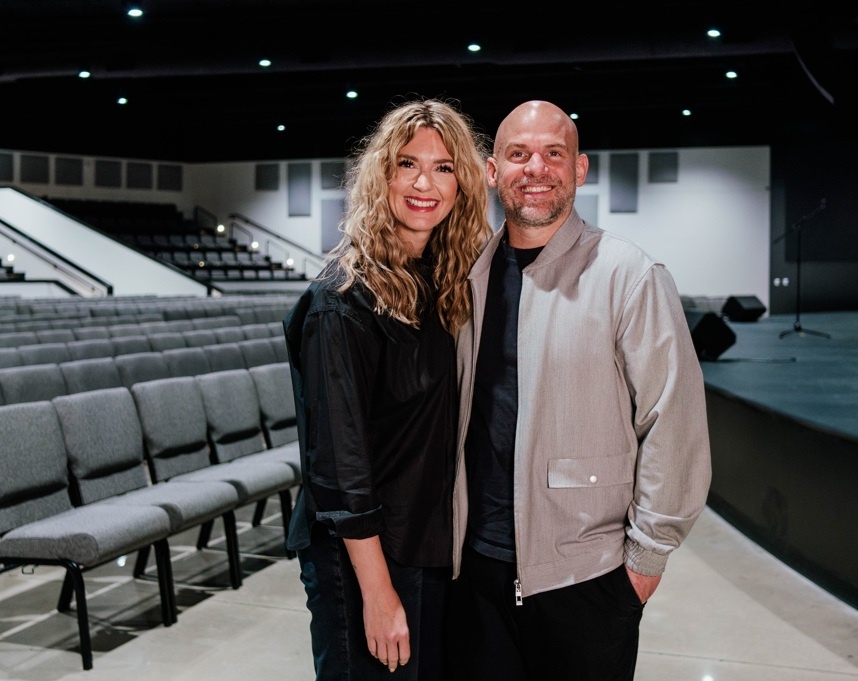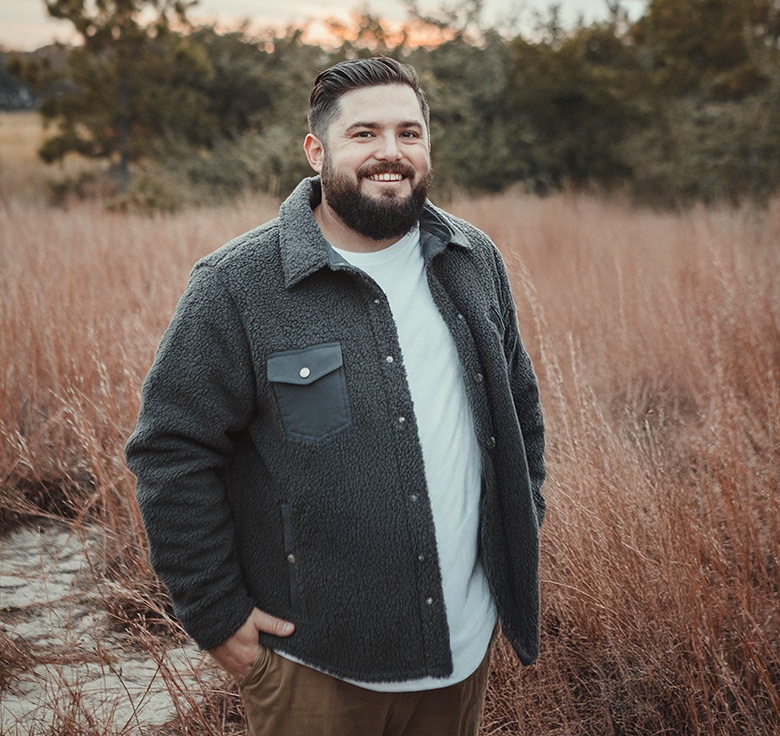Leadership
- NAVIGATING A FOGGY PATH
In the few years following COVID, church leaders were not focused on construction or physical plant expansion; rather, they were waiting for in-person worship attendance to fully recover. Over the last 12 to 18 months, lenders finally began to see a significant increase in construction financing requests. Enter the tariff war and the caution flags are back out. Not unlike during COVID, the current uncertainty around ongoing tariff negotiations is causing mounting concerns about supply chain disruption, the timely availability of materials, and their price. Further — although it’s always challenging to correlate the physical plant wish-list with a church’s borrowing capacity — cost escalation is making project planning even more difficult right now. Indeed, uncertainty reigns in the current faith-based lending climate. Even so, some strategies are worth implementing regardless of the economic factors at play. STRATEGY #1: Talk to the lender first Throughout my 34 years of ministry lending — which includes more than $5.5 billion in loans to churches — the core advice remains the same: talk to the lender first. You are in a better position to develop a design concept once you know what you can afford to borrow, whether your sources of funding will include a capital pledge campaign, whether you have sufficient equity to support further expansion — the list goes on. Too often, the practice has been to sit down with an architect and builder first to develop a rendering or an animation in hope of using it to jumpstart fundraising. Later, when the realities of cost and borrowing capacity are brought to bear, “value engineering” ensues and the design concept ends up getting scaled back. The risk of this scenario is exacerbated in times of escalating construction costs. The best way to avoid having to reduce the scope of a vision which has already been cast to your congregation is to obtain a no-cost borrowing capacity analysis from a qualified church lender prior to engaging an architect or builder to draft a facility design concept. STRATEGY #2: Select a highly qualified general contractor Selecting the right General Contractor (GC) is of primary importance in managing a successful project. Doing so reduces the ministry’s risk of surprises. Sure, it’s tempting to select a minimally experienced, charitably priced builder — perhaps from among the donor base — when the budget is tight and construction costs are escalating. Resist the urge. It’s better stewardship to select a GC that has deep experience with large commercial structures similar to what you will be building. Such a lender is likely to require a Guaranteed Maximum Price (aka a Not-To-Exceed) construction contract to ensure that the church has minimum exposure to unanticipated cost increases. Finally, ask the builder to provide a bonding capacity letter — a high-quality GC will be able to do so. Bonding capacity refers to the maximum amount of surety credit a contractor can obtain from an insurance company, based on the builder’s financial strength, experience, and ability to handle projects like yours. Most lenders won’t require you to purchase a performance bond (an insurance policy guaranteeing the contractor will complete the project according to the terms of the contract), but taking the time to confirm the GC meets the insurer’s requirements for a performance bond — is “bondable” — is a wise precaution. SCANNING THE HORIZON Perspectives from the “front lines” of faith-based lending Church Executive: Surely, church leaders are feeling the uncertainty related to construction costs. Are you fielding a lot of inquiries about the current ‘climate of concern’? Dan Mikes: Frankly, the conversation rarely starts that way. Instead, what typically happens is that a church comes in with a request to buy a facility and renovate it. The budget they anticipated for renovation might have been around $200 per square foot to start with, but we’re closer to the $350 to $400 mark right now. Because we’re in the market every day, we’re seeing that most churches are only in the early stages of understanding what’s happening in this regard. So, when a church comes to us singularly focused on the need for a facility and securing the funds to get it, we’re mostly trying to help them adjust their expectations. CE: In your experience, how often are churches not talking to the lender first, as you advise? Mikes: Most of the time; the process rarely starts with a conversation about borrowing capacity. The more common scenario is that a facility becomes available for purchase, or a church wants to build something to meet their ministry needs, and they come to us. Really, it’s fairly common for a church to get into a design concept, put up a rendering, or do an animation to show the donors. Then, when they start talking to a lender, they find out that they need to scale things back a bit. That’s why I’m like a broken record about the need to talk to a lender first. CE: When you see church leaders needing to ‘walk back’ their building project vision with the congregation, what does that look like? Mikes: Well, a church client we just met with yesterday decided to look for a smaller building. Originally, they were looking to buy and renovate a ‘big box’ for church use, to the extent that it would also offer options for local ministries to lease space. After talking with them about what’s realistic, they decided to look for a smaller building and focus only on what it will take to accommodate the church’s needs, for now. If they can help local ministries later in their evolution, then — together — we’ll continue to look for that opportunity. But in response to your question, the more typical scenario is the need to exclude a wing from the master plan and move its construction to phase two. This is especially challenging if it’s all under one roof line, in which case a church will often look at shelling in a portion of the structure and Read More >
Risk Management
- Stewardship Practices of Thriving Ministries
By Brian Lindquist The modern insurance landscape is much different than it was even five years ago. Record losses, inflation, high construction costs, and more have all contributed to rising insurance costs. This industry-wide trend has many ministries asking questions about how to maximize the value of their insurance. There are many factors that drive the overall cost of insurance, and losses play a main role. Generally, more losses lead to a higher cost of insurance for everyone. Several insurance insiders from Brotherhood Mutual share their insights on how to manage risk and get the most from your insurance. They’ve intensely studied what successful ministries do to protect themselves. “Insurance is intended to be protection for a large financial loss that an organization couldn’t otherwise survive,” said Joel Colglazier, assistant vice president of underwriting at Brotherhood Mutual. In other words, it’s designed to make you whole again after loss. TOP TIPS FOR MAXIMIZING THE VALUE OF YOUR INSURANCE Controlling Cost To understand how you can control the cost of your insurance policy, you need to understand how your insurance policy is rated. Insurance companies look at your campus and facilities, and your geographic location to determine the types of losses that are more likely for your area, such as fire, coastal storms, hail, and others. They’ll also look at the types of losses that are probable for the types of activities you’re engaged in. Finally, insurance companies will look at how your past losses might help to predict your future losses. When it’s time to renew your policy, or if you switch insurance companies, one of the things they look at is how many times a ministry has submitted a claim. Frequently submitting claims, even when they seem small, adds up. And frequent claims can increase the cost of your insurance because you’re at greater risk of having a larger claim in the future. This is where the concept of risk management comes into play. “Insurance is one piece of a larger risk management puzzle,” noted Colglazier. In addition to having insurance, taking proactive steps to avoid claims altogether is an important step that helps ministries in the long run. “One of the most important risk management steps is to think of your insurance company and agent as a partnership,” said Colglazier. Collaboratively working together to strengthen your resiliency is central to Brotherhood Mutual’s mission of advancing the Kingdom by serving the Church. Insurance helps protect the future of your ministry’s people and property. While it’s crucial to have the right insurance, it’s also important to take proactive steps to reduce or prevent losses from happening altogether. Not only does this reduce the chance you’ll have out of pocket expenses, but it can help control the cost of your insurance. Managing Risk Managing risk helps ministries steward their resources and maximizes the value of insurance. “It’s a two-part process,” offered Andy Hayton, a regional manager with Brotherhood Mutual. “First, it involves looking at what you can do now to prevent claims from happening in the first place. Second, if you have had a claim, it’s looking at what you can do to prevent it from happening again.” For example, as you implement policies and procedures or if you add something to your property to improve safety, document that and let your agent know. “This is helpful, especially when you make improvements after a claim event,” said Hayton. Protecting Against Property Risk Property risks are those that affect your buildings, equipment, vehicles, and other assets. These include fire, water damage, theft, vandalism, wind, hail, lightning, and others. Property risks can result in costly repairs or replacements, as well as disruptions to your ministry activities. So it’s good to think ahead when it comes to managing risk on your property. “The bottom line is that ministries need to be proactive and control the controllable. Routinely walk around your campus to identify hazards before they become a problem. Make repairs quickly while they are small and more affordable,” noted Colglazier. “Ministries need to have a plan and budget for the things that can improve safety and resilience.” Managing Liability Risks Liability risks are those that affect your legal responsibility for the safety and well-being of others. These include injuries, accidents, lawsuits, allegations, and other claims that can arise from your ministry activities. Liability risks can result in costly settlements, judgments, medical bills, legal fees, and reputational damage. “I recommend that ministries keep good records,” said Ron Troyer, a senior manager in casualty claims for Brotherhood Mutual. This includes everything from financial decisions to board meeting minutes, volunteer position descriptions, and documenting slips, trips, and falls. Also, it’s important to follow your ministry’s written guidelines. If you don’t have guidelines, start developing them right away. And when the potential for a lawsuit arises, for example, someone threatens to sue, Troyer’s advice is to report it. “We’ll investigate and see if there are things that we can do to help you prevent an issue from becoming a lawsuit. If you try to handle it yourself and someone ends up suing you, it may become much more complicated.” The risk management tips on the following page are some of the most critical actions that healthy, successful ministries take when managing their risks and reducing or preventing loss. See how many of these steps your ministry currently has in place. Property Protection Tips Keep your building well maintained and updated. A well-kept building shows that you care about your ministry and your risk management. Make sure your fire sprinkler system is centrally monitored by a professional service. Keep up on annual and five-year inspections as well as maintenance of your sprinkler system. Install a flow-based automatic water shut-off device. This can prevent major water damage and mold growth, which are both some of the most costly and disruptive types of claims for ministries. Plus, it can potentially lower your deductible for freeze claims. Have your electrical panels inspected by a licensed electrician at least annually. Read More >
Pastor-Friendly A/V
- IN FULL-FLOW MODE: Steve Tignor + Wave Church
By RaeAnn Slaybaugh For years, the production team at Wave Church in Virginia Beach, Va., battled content storage inefficiencies. Multiple servers created chaos and disruption. A lack of remote access limited the content they could produce. Nickel-and-dime pricing for the features they needed created anxiety and uncertainty. Altogether, this made it tough for Production/Communications Director Steve Tignor and his staff to produce the high-quality content that was not just needed, but that they were passionate about creating. Then, a game-changing alternative emerged — one that saves them tens of thousands of dollars a year. One that’s much easier to use and highly accessible (even remotely). A solution that accommodates 400% more content and ramps up the speed of content production by at least 30%. It wasn’t too good to be true. Here’s how. Nearly 10 years ago, Wave Church made the jump to using a studio-quality storage area network, or SAN — basically, a large, expensive hard drive. “We had to have it,” recalls Production/Communications Director Steve Tignor. “For the things we were doing — producing a lot of content, and even a TV show — speed is everything.” To start, the team got to work ‘digitizing everything,’ according to Tignor. “We moved all our content off of DVDs and other forms of storage, like Dropbox,” he recalls. This included rooms full of videotapes dating back to 1999. In the end, they wound up with four workstations providing access to every file a team member might need … but they really had to work for it. A Virtual Private Network (VPN) was set up to share files; however, it was slow. “It was more like file-browsing, not necessarily being able to work on a project,” Tignor says. “It was a lot of what we didn’t need; it probably added more headaches. We were making do with a workflow that didn’t match what we were trying to achieve.” On the one hand, it was better than the previous approach: adding one hard drive after another, with a big price tag each time. That, and incorporating Dropbox for storage, as many churches do, which created even more chaos and disorganization. Then came COVID “We had to get letters for our team to be able to travel into the office, in case we got pulled over by police during the quarantine,” Tignor recalls. “That’s when it really started becoming a problem. No one was in this building except for us.” Once the pandemic passed, the team’s travel schedule further complicated matters. While in different cities shooting interviews, for example, they were unable to access other projects to work on in their down time. Ideally, the team would have a platform that enabled them to work on projects remotely and access and edit content — including full-length videos — from anywhere. Their then-current setup was far from perfect, but as far as Tignor and his team knew, it was the best they could do. A trip to the National Association of Broadcasters Show (NAB) in 2023 would change that. A new, improved approach emerges “Going to NAB, I was pretty much on a mission to find a better content storage solution,” Tignor recalls. One of the first stops was the church’s current vendor. “Everything they said was pretty much ‘same old, same old,’” he says. “We learned that it would cost X more to add this or that basic feature for the things we wanted to do, which just wasn’t in the budget.” Dismayed but not discouraged, the Wave Church team spotted RED Digital Cinema cameras in use at another booth: DigitalGlue. Because the church uses these same cameras, they were drawn in. They soon learned about creative.space, a shared storage platform for video teams. “For them to show that creative.space can handle RED content was huge,” Tignor says. “That’s a high level of content; it demands a lot of data.” Product Manager Nick Anderson walked the Wave Church team through the workflow. “Our guys loved it,” Tignor recalls. “And then he told me the price.” At first, it seemed too good to be true. “It was so much cheaper than any other solution we’d found,” Tignor recalls. “I was like, Wow, that’s crazy. I don’t even know how you’re doing that.” More demos followed. A few months later, Tignor was a true believer. He ordered creative.space. Onboarding made simple A third-party IT company was hired to get creative.space set up and rolled out. By all accounts, it was much smoother than anyone anticipated. “Onboarding was super easy; there was no challenges that DigitalGlue couldn’t handle in that regard,” Tignor says. “Customer service was fast, quick, and very proactive, which was different. Instead of us reaching out, they were always checking in.” In fact, he says, any headaches originated with the IT company that was hired to set up the solution. “Fortunately, though, DigitalGlue would send someone out to help them get it all set up,” Tignor points out. So, with creative.space up and running, the Wave Church production team got to work, enjoying four times more storage capacity than before. They quickly began to appreciate features like user management, templates, tagging and much more. “In my world, prior to creative.space, my team said it took a lot of time to find certain content,” he explains. This was because content was previously stored using a folder system. Tignor explains: “When we recorded something or took a photo, it wouldn’t instantly add, ‘Here’s Pastor Steve’ to the data; this information had to be manually input. So, being able to create these tagging systems [within creative.space] really speeds up the search process.” This souped-up search functionality has been especially helpful as Wave Church hosts a variety of preachers at multiple campuses. “We have all different types of testimonies, conferences and events, so it just allows for structure,” Tignor explains. “We can still use the folder system, but the search parameters are much more targeted. Once we got it laid out, it made everything so much Read More >
Mission & Travel
- Holy Land journeys: A disciple-making tool or Christian vacation?
Walking in the footsteps of Jesus in the land of the Bible is the ultimate hands-on disciple-making experience for Christians — not just a vacation to a destination related to church. Educational Opportunities Tours (EO) President/CEO James Ridgway recently interviewed Rev. Tom Smith about how Holy Land journeys have changed lives and inspired the faith of people who traveled with him in the Holy Land. James Ridgway: How did your first Holy Land journey influence your life and ministry? Rev. Tom Smith: It’s safe to say that it began to affect me even before I returned home. But the immediately noticeable influence was the way that it affected my preaching and teaching. I found myself painting word pictures of a passage of Scripture as I would preach or teach. I would give little tidbits of what it means to go ‘up’ from Jericho or the winds affecting the Sea of Galilee as they funneled into that area. It was like I had an entirely new resource to add to my library as I prepared for a sermon or class. Ridgway: When did you decide to start taking groups to the Holy Land? How did the people respond? Smith: I went the first time without a group. But after returning, my excitement was obvious. I talked about it constantly. As soon as I was introduced to Educational Opportunities and learned of how I could ‘earn’ a trip, I decided to go back and take as many people as possible. As soon as I mentioned that I was putting a group together, people started signing up. A journey to the Holy Land is in the hearts of a lot of people — not as a vacation but as part of their faith development — so there was natural interest in participating. Folks were excited that they could travel with me because they trusted me as their pastor. Ridgway: Afterwards, what did you see in the lives of those who experienced the Holy Land? Smith: They were changed. They engaged with Scripture differently. They talked about the way they heard the sermons differently. They began to participate more readily in Sunday School, study groups or accountability groups. Many of them became more open and expressive of being leaders in the congregation. They have a renewed/revitalized faith, it seems. Ridgway: What other benefits come from the Holy Land journeys? Smith: One of the things was how close the group became. They bonded with each other as they shared the experience. They also bonded with me, as their pastor, differently. Instead of hearing me teach or preach a couple of hours per month, they spent 12 to 14 hours a day talking and experiencing this profoundly moving journey. We formed some truly lasting bonds. They also came back with a deeper understanding of the current issues facing people in the region. They experienced not just what the news media shared, but what they themselves saw. They could ‘put a face’ to it, and it opened doors/eyes in a way that nothing else could do. Ridgway: How does a pastor plan a journey to the Holy Land? Smith: There are two ways a pastor could begin this journey. First, they could participate in an EO Familiarization tour. After experiencing the Holy Land personally, they could start planning a group journey. Personal experience helps while recruiting a group. The second way is to jump right in and organize an EO Holy Land journey for their group by going to www.eo.travelwithus.com and reviewing the different itineraries offered and finding one that best suits what they and their folks would love to see. Then, they can reach out to the EO team to partner and build the journey that will help make disciples for Jesus Christ. The EO staff will provide all the tools necessary — including ongoing support — to build a life-changing tour for the congregation.










